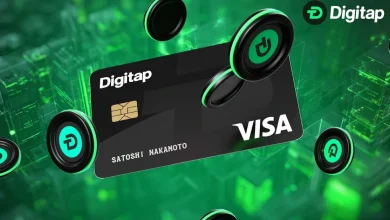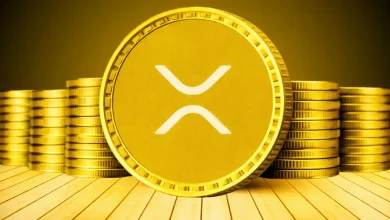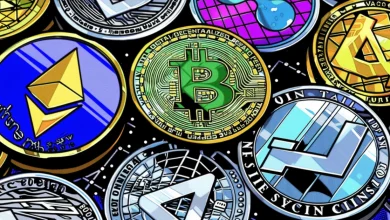
Most cryptocurrencies follow inflationary models where new tokens enter circulation through mining rewards or staking emissions.
PEPENODE reverses this trend through aggressive deflationary mechanics that permanently remove 70% of tokens spent on platform upgrades.
Combined with 160 million tokens already locked in staking and 5,000% reward rates, the project creates a mathematical scarcity engine that fights inflation at the protocol level.
The $200,000 presale at $0.0010161 per token shows early investor confidence in this deflationary approach.
PEPENODE’s Aggressive Deflationary Economics Model
The 70% burn mechanism on upgrade purchases creates deflationary pressure in the meme coin space.
Every time users spend PEPENODE tokens to improve their virtual mining facilities, 70% of those tokens disappear forever from the total supply.
This automatic burning happens with each transaction, creating constant deflationary force that intensifies with platform adoption.
Traditional cryptocurrencies increase supply through block rewards, staking emissions, or developer allocations.
Bitcoin adds new coins through mining, Ethereum generates staking rewards, and most altcoins follow similar inflationary patterns.
PEPENODE’s burn mechanism operates in reverse – higher usage leads to fewer tokens in existence rather than more.
Over 210 billion tokens were initially minted, providing substantial supply for the burn mechanism to work against.
As users spend tokens on mining upgrades, facilities, and enhancements, the massive initial supply shrinks permanently. This creates potential for dramatic supply reduction over time as the gaming platform gains adoption.
PEPENODE gives real meaning to the word “utility” – users don’t just stake tokens, they build their own virtual mining setup by purchasing Miner Nodes and upgrading Facilities. Each node boosts their simulated hashpower, turning token holding into an engaging game.
This positive feedback loop creates exponential scarcity generation that compounds over time. Unlike static burn mechanisms, PEPENODE’s system scales with actual platform utility.

160 Million Staked Tokens Create Immediate Supply Shock
The 160 million tokens already locked in staking contracts represent approximately 0.076% of the total 210 billion token supply. But their impact extends beyond simple percentage calculations.
Staked tokens cannot be sold or traded, immediately reducing liquid supply available for market transactions.
This staking participation creates artificial scarcity separate from the burn mechanism.
Staked tokens remain locked during reward earning periods, preventing their circulation in trading markets. The combination of burned tokens and staked tokens creates dual pressure on available supply.
The high staking participation rate shows user confidence in long-term value creation. Users who stake tokens voluntarily accept illiquidity in exchange for reward generation.
Staking rewards generate additional tokens that users can either hold or spend on platform upgrades.
5,000% Staking Rewards Combat Traditional Inflation
The 5,000% staking rewards provide returns that far exceed traditional inflation rates.
Current global inflation averages 3-8% annually across major economies, making PEPENODE’s staking yields attractive for inflation protection. These rewards compensate holders for token illiquidity and project development risks.
High staking yields create powerful incentives for long-term holding over short-term trading.
Users earning 5,000% returns have strong motivation to maintain staking positions rather than selling tokens for immediate profits. This behavior pattern supports price stability and reduces market volatility.
The reward structure attracts users seeking yield generation in low-interest-rate environments.
Traditional savings accounts and government bonds offer minimal returns compared to PEPENODE’s staking program.
Staking rewards funded through tokenomics rather than external sources create sustainable yield generation.
How to Join PEPENODE’s Deflationary Experiment
PEPENODE presale participation requires connecting supported Web3 wallets including MetaMask, WalletConnect, and other major providers to the official platform.
The connection process accommodates both experienced crypto users and newcomers to decentralized finance applications.
Multiple payment options support different user preferences and technical experience levels.
Cryptocurrency payments accept ETH, BNB, and USDT in both ERC-20 and BEP-20 formats for users with existing crypto holdings. Credit and debit card options provide accessibility for traditional finance users entering cryptocurrency.
The current presale price of $0.0010161 per token provides early access before overall market exposure and potential price appreciation.
Progressive pricing means earlier participants receive better rates than later buyers, rewarding early commitment to the deflationary experiment.
Immediate staking participation allows users to begin earning 5,000% rewards from the moment of purchase.
The streamlined staking process eliminates waiting periods between token purchase and reward generation.
This immediate utility differentiates PEPENODE from projects requiring months of development before functionality.
You can connect any of the supported wallets and buy PEPENODE using card or crypto through the official website.
The purchase process includes clear options for immediate staking participation to join the deflationary economics experiment.
Token unlocks occur after the Token Generation Event, providing access to the virtual mining dashboard and gaming features.
Staked tokens continue earning rewards throughout lock periods, with accumulated rewards available for platform upgrades that trigger the burn mechanism and contribute to supply reduction.
Disclaimer and Risk Warning
The content featured on Coinpedia's press release page is provided for informational purposes only. Coinpedia does not endorse, verify, or take responsibility for the accuracy, completeness, or reliability of any press releases or associated materials. Any views, opinions, or statements expressed in these press releases are those of the respective issuers and do not reflect the opinions or positions of Coinpedia. Coinpedia is not liable for any content, products, services, or actions mentioned in the press releases. Readers should independently verify the information before taking any actions related to the subject matter of the releases.








